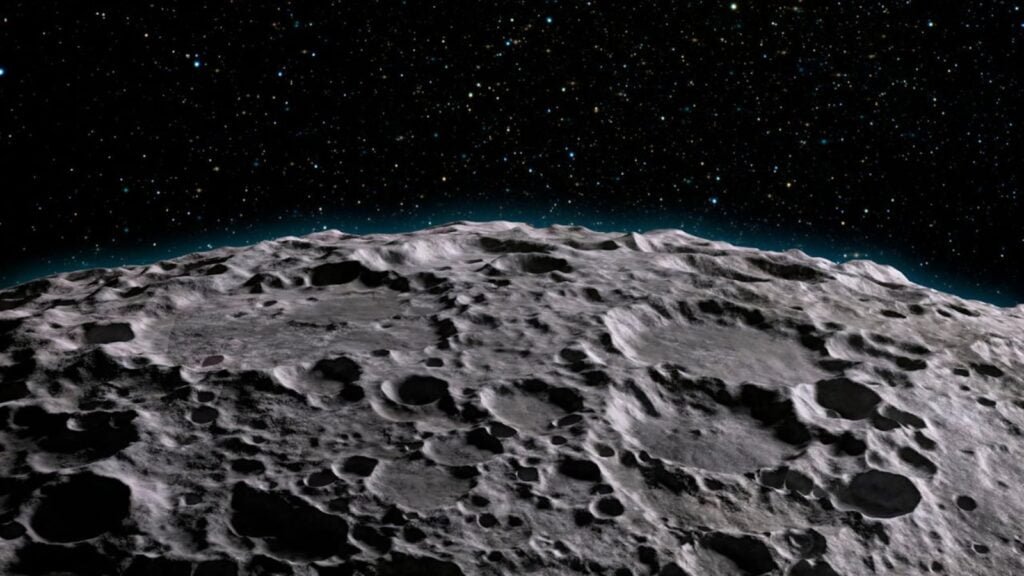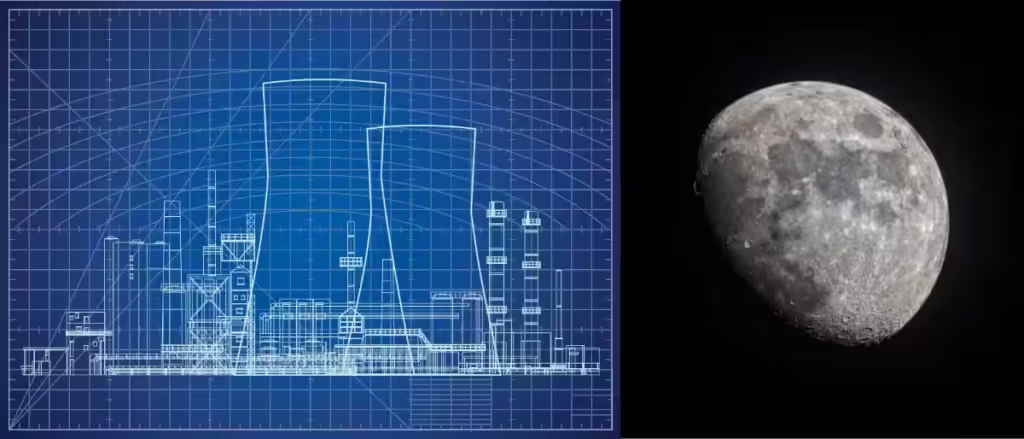| In Short |
| · India Joins Lunar Project: India is collaborating with Russia and China on a mission to establish a nuclear power plant on the Moon |
| · Nuclear Power for Lunar Bases: The plant will provide continuous energy, essential for maintaining lunar colonies and research stations, overcoming the limitations of solar power |
| · Technological Goals: The plant is designed to generate up to half a megawatt of electricity, enabling scientific research, mineral extraction, and long-term human presence on the Moon |
| · Operational by 2035: Russia, leading the project, plans to make the lunar power plant operational by 2035, forming the foundation for future lunar exploration |
| · Geopolitical Cooperation: This collaboration marks a new era of space exploration, with geopolitical rivals India, China, and Russia working together to pioneer extraterrestrial infrastructure |
In a never-seen-before cooperation, the moon will host a nuclear power plant developed jointly by India, China, and Russia. The project, which is being led by Russia’s state nuclear corporation Rosatom, may be part of a long-term goal to achieve a sustainable human presence on the Moon with a reliable source of energy. Interest from both India and China follows, and hence, this cooperation represents an important increase in the degree to which the scope of international cooperation in space can be expanded.
Why Nuclear Power on the Moon?
This concept of a nuclear power plant on the Moon is to obtain a constant, high-density source of energy which would work independently of the Sun. Solar power, while quite effective on Earth, turns into an unsteadier source on the Moon because of the fact that a lunar night lasts for 14 Earth days. A nuclear reactor can supply energy unceasingly and will be needed for maintenance of the lunar base, research stations, and finally, colonies.

The ambitious project intends to install a small nuclear reactor capable of producing up to half a megawatt of power. Energy on such a scale could support long-term human presence and infrastructure for scientific research, mineral extraction, and perhaps even habitation on the Moon. The ban is expected to be in function by 2035 to align with the greater vision of building a lunar base shared by Russia and China.
India’s Role in Lunar Power Projects

Another reason behind India’s interest in this cooperation derives from the country’s bourgeoning space ambitions. Since the success of the Chandrayaan missions, India has been pursuing more and more serious international cooperation in a bid to cement its status as a space power. The project of the lunar nuclear power plant thus neatly elbowed its way into India’s large space program with plans for sending a manned mission to the moon by 2040. Cooperation with Russia and China allows India to take advantage of state-of-the-art nuclear and space technologies of these countries.
The Bigger Picture: Creating a Lunar Colony
The nuclear power plant is not just about energy; it serves as the bedrock of greater, wider activities on the Moon. With the given power provided steadily, this will facilitate research in key areas pertaining to lunar geology, space radiation, or extraction of valuable minerals such as helium-3, considered a likely fuel for nuclear reactors in the future. The plant also opens the way to the building of permanent human settlements on the Moon and perhaps as a base for continued missions to Mars and beyond.
Geopolitical Implications
Cooperation by India, China, and Russia in this matter dramatizes a new phase of space exploration. The increasing multi-polarity had traditionally dominated the arena, with the United States and Europe foremost in the field. The involvement of the three big space powers not only underlined their increasing influence but perhaps foreshadowed a new era of cooperation wherein geopolitical rivals come together on extraterrestrial goals.
Technological Challenges and Future Prospects
This would involve a host of technical challenges in transporting and installing a nuclear reactor on the Moon. It will need to be compact and lightweight to be accommodated aboard a spacecraft. Upon landing on the Moon, it will have to be assembled either by the astronauts themselves or robotic systems. Despite the presence of these risks, the accrued benefits of having a nuclear power plant override them, thus providing a very stable energy source that is deemed quite critical in longer missions.
Construction of the nuclear power plant on the Moon by India, China, and Russia is a great leap in humanity’s research of space. All of these countries, while collaborating in it, will contribute much to the development of space technologies and the progress of science in general.
For Latest News Updates, Click Here.
